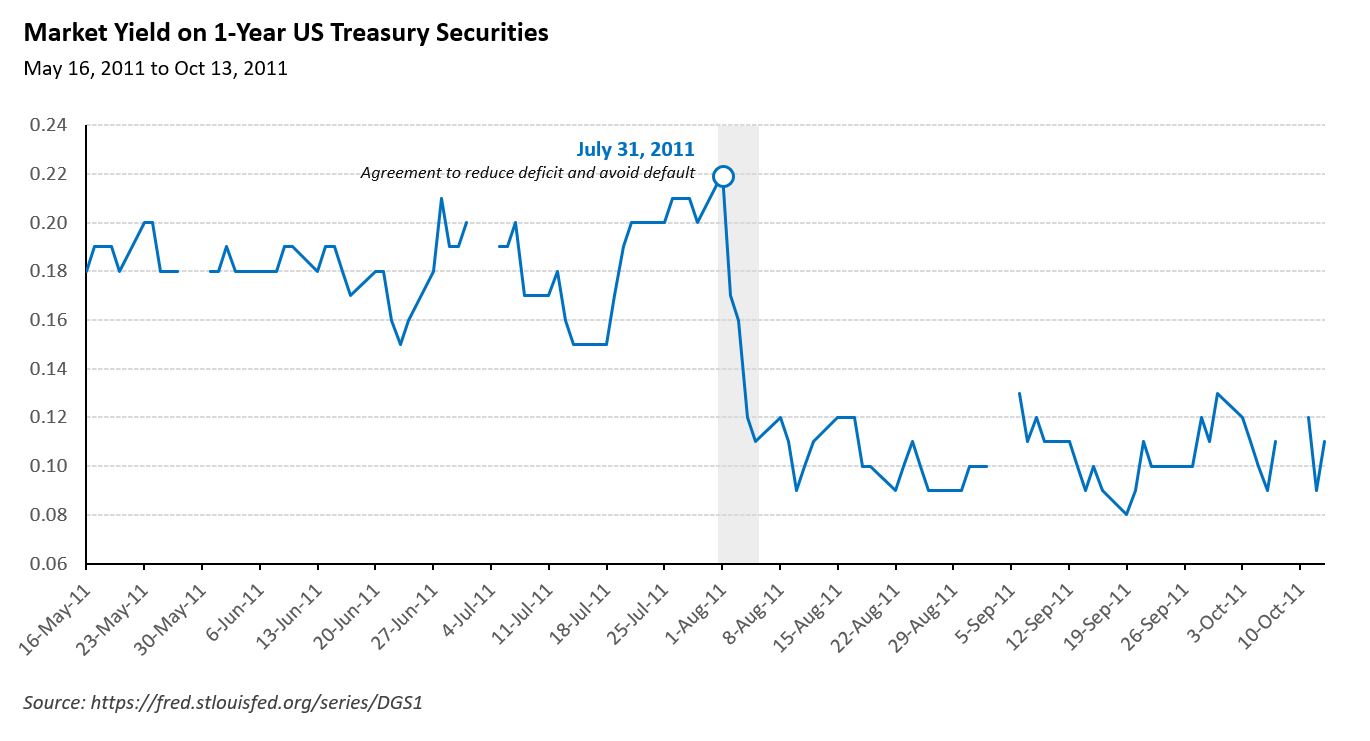One of the biggest concerns for investors right now is the looming “X-date” as we approach the U.S. debt ceiling limit. In the unlikely scenario that a deal to raise the ceiling is not made, what would be the ramifications of a U.S. debt default? Truthfully, no one knows, however examining what might happen to other investments could help guide investors towards making informed decisions.
As a refresher from our last post (The Debt Ceiling Debate) the “X-date” is the estimated date at which the U.S. Federal Government can no longer pay its bills, including U.S. Treasury securities. In a recent letter to Congress, U.S. Treasury Secretary Janet Yellen said that the agency may be unable to meet all of its debt obligations as soon as June 1 if the debt ceiling is not raised.
The most recent and notable example of debt limit negotiations occurred in 2011. That was also a period of extremely harsh rhetoric and a lack of cooperation in congress until it was nearly too late. At that time, according to the transcript of the Federal Open Market Committee conference call in August 2011, it appeared the U.S. Treasury prioritized principal and interest payments on U.S. Treasuries over payments of other obligations such as Social Security, Medicare, veteran’s benefits, etc. Just because the Treasury acknowledged prioritizing funds to ensure U.S. Debt would not default if the debt ceiling was not raised, does not mean this time will be the same, however that period and policy can be used as a proxy for what could occur in a few weeks.
Granted we are in a different economic environment compared to 2011. At that time, the economy was showing signs of recovery from a recession caused by the credit crisis of 2008-2009. Today we find ourselves in an inflationary period, fueled by pandemic era stimulus, and amid the Fed seeking to slow the economy by recently hiking rates at the quickest pace in 40 years. The chart below depicts the yield of 1-year U.S. Treasuries, of which you could see the significant drop in yield (shaded region) right after a deal was made on the debt ceiling on July 31, 2011. Seemingly, investors piled into “safety” once a deal was made. This is not to suggest 2023 will be a repeat of 2011 but to reiterate the prudent decision of staying the course and ignoring the noise works.


